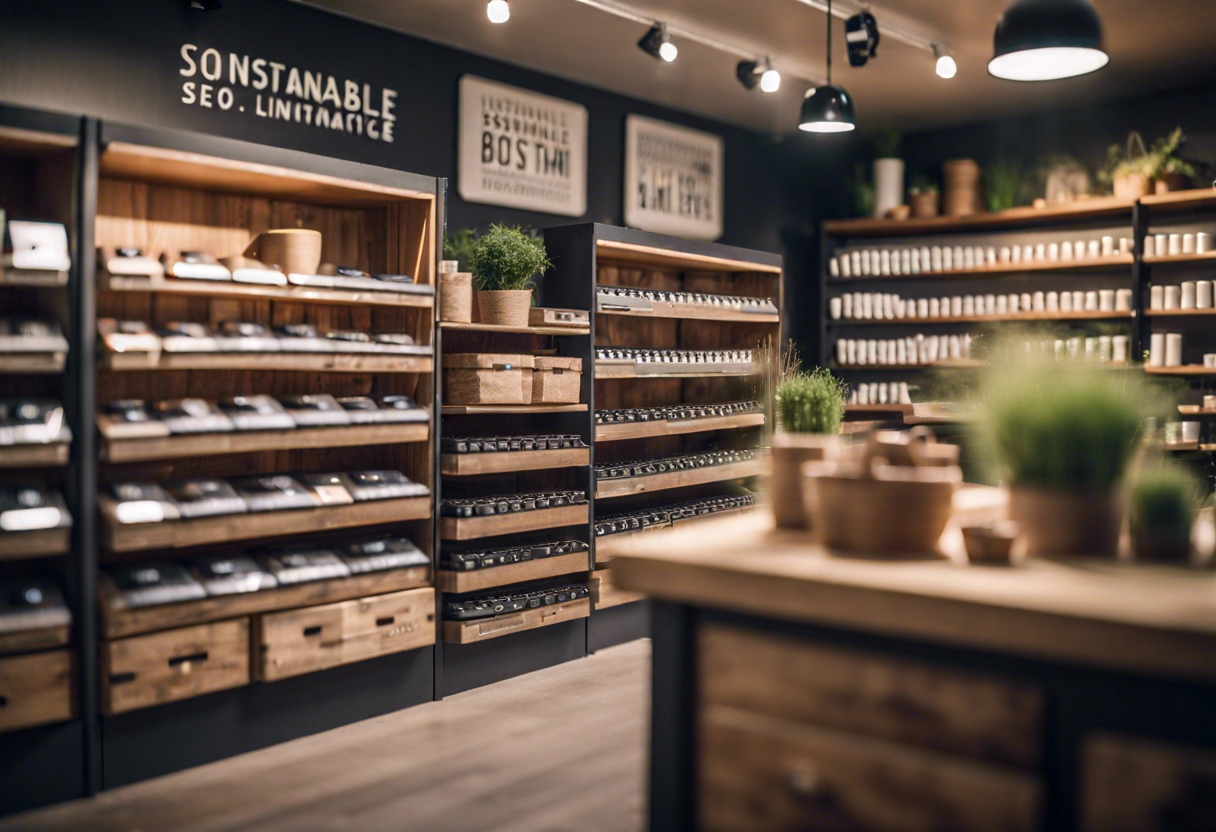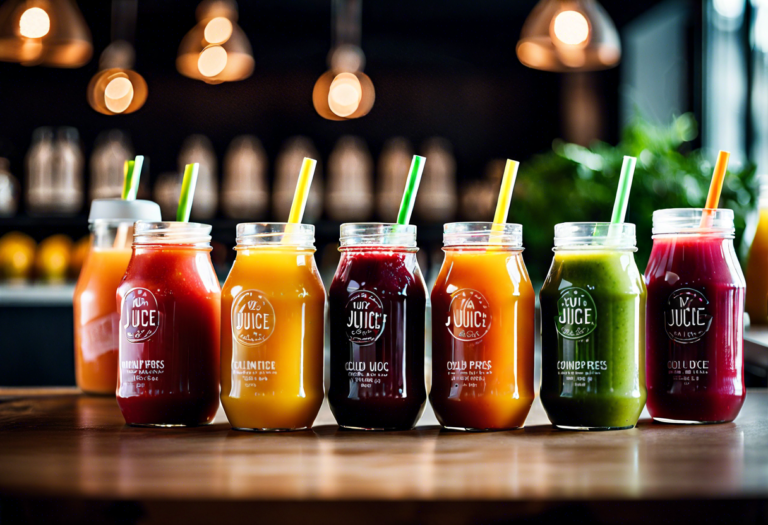SEO Sustainable Living Stores
Importance of SEO for Sustainable Living Stores
When it comes to sustainable living stores, search engine optimization (SEO) plays a crucial role in driving organic traffic and increasing online visibility. SEO techniques help these stores improve their online presence, reach their target audience, and ultimately, achieve their sustainability goals.
One major reason why SEO is essential for sustainable living stores is that it allows them to rank higher in search engine results pages (SERPs). By optimizing their website content with relevant keywords, meta tags, and descriptions, these stores can increase their visibility when users search for sustainable products or eco-friendly solutions. This increased visibility leads to more organic traffic, making it easier for potential customers to find and engage with sustainable living stores.
Another benefit of SEO for sustainable living stores is the ability to target a specific audience. By incorporating sustainable living keywords into their website content, these stores can attract individuals who are actively seeking eco-friendly alternatives. This targeted approach ensures that the right people are accessing their website and potentially converting into customers.
Furthermore, implementing SEO strategies allows sustainable living stores to build a strong online presence and brand authority. When search engines recognize a website that consistently provides valuable and relevant content, they reward it with higher rankings. This establishes credibility, trust, and authority within the sustainable living industry. As a result, sustainable living stores become go-to sources for eco-conscious consumers, helping them not only attract new customers but also retain existing ones.
Moreover, SEO can significantly impact the overall user experience (UX) of a sustainable living store’s website. By optimizing website speed, implementing mobile-friendly designs, and improving site navigation, these stores can provide visitors with a seamless and enjoyable browsing experience. This positive UX encourages visitors to spend more time on the website, explore different product offerings, and ultimately make a purchase.
Measuring and analyzing SEO metrics is crucial for the growth and success of sustainable living stores. By tracking key metrics such as organic traffic, keyword rankings, bounce rate, and conversion rate, these stores can gain valuable insights into their SEO performance. This data-driven approach enables them to identify areas for improvement, refine their SEO strategies, and ultimately drive more targeted organic traffic to their online stores.
SEO is of utmost importance for sustainable living stores. It helps them increase their online visibility, attract a targeted audience, build brand authority, enhance user experience, and measure their SEO success. By incorporating effective SEO techniques, these stores can create a strong digital presence and contribute to the promotion of sustainable living practices.
Optimizing Website Content for Sustainable Living Keywords
Building and managing a sustainable living store requires a strong online presence to reach and engage with your target audience. One of the key elements in achieving this is search engine optimization (SEO). By optimizing your website content for sustainable living keywords, you can improve your visibility in search engine results and drive organic traffic to your store. Here are some effective strategies to optimize your website content for sustainable living keywords:
1. Keyword Research
The first step in optimizing your website content is to conduct thorough keyword research. Start by identifying the primary sustainable living keywords that are relevant to your store and the products or services you offer. Use keyword research tools to find high-search-volume keywords with lower competition. This will help you target the right audience effectively.
2. Create High-Quality Content
Once you have identified your target keywords, focus on creating high-quality content that provides value to your audience. Develop well-written blog posts, articles, and product descriptions that incorporate the identified keywords naturally. Avoid keyword stuffing, as this can negatively impact your search engine rankings. Instead, aim for a seamless integration of keywords within your content.
3. Optimize Meta Tags
Meta tags play a vital role in SEO, as they provide information to search engines about your web pages. Optimize your meta titles and descriptions by including your target keywords naturally. The meta title should be concise, compelling, and include your primary keyword. The meta description should provide a brief overview of the web page’s content and entice users to click through to your site.
4. Use Header Tags
Properly utilizing header tags (H2, H3, etc.) helps search engines understand the structure and hierarchy of your content. Incorporate your target keywords into relevant header tags to signal their importance to search engines. This also enhances the readability and user experience of your content, as it allows visitors to quickly scan and navigate through your web pages.
5. Optimize Image Alt Text
Images play a crucial role in engaging users and improving the visual appeal of your website. However, search engines cannot interpret images directly. To ensure your images are SEO-friendly, optimize the alt text by including relevant keywords that describe the image accurately. This not only improves accessibility but also helps search engines understand the context of your images.
6. Increase Page Loading Speed
Page loading speed is a critical ranking factor for search engines. Slow-loading pages can lead to a higher bounce rate and negatively impact your SEO efforts. Optimize your website’s performance by compressing images, minifying CSS and JavaScript files, and utilizing caching techniques. This helps to improve user experience, retain visitors, and boost your website’s search engine rankings.
By implementing these strategies, you can optimize your website content for sustainable living keywords and improve your organic visibility in search engine results. Remember to regularly assess and refine your SEO efforts to stay ahead of the competition and drive continuous organic traffic to your sustainable living store.
Effective On-Page SEO Strategies for Sustainable Living Stores
When it comes to running a sustainable living store, implementing effective on-page SEO strategies is crucial to increase visibility and drive organic traffic to your website. On-page SEO refers to optimizing the content and structure of your web pages to make them more search-engine friendly. By following these strategies, you can improve your website’s rankings on search engine results pages (SERPs) and attract more potential customers interested in sustainable living.
-
Keyword Research: Start by conducting thorough keyword research using a reliable keyword research tool. Identify relevant and high-ranking sustainable living keywords and phrases that align with your store’s products and offerings. Use these keywords strategically throughout your website’s content, including headings, meta tags, URLs, and image alt text.
-
Optimize Page Titles and Meta Descriptions: Craft compelling and keyword-rich page titles and meta descriptions for each web page. Page titles should be concise (around 50-60 characters) and include your primary sustainable living keyword. Meta descriptions should provide a brief summary (around 150-160 characters) of the page’s content while incorporating relevant keywords to entice users to click on your link in search results.
-
Create Unique and Engaging Content: Develop high-quality, informative, and engaging content that revolves around sustainable living topics and products. Aim to create unique content for each web page and blog post. Make sure to incorporate your target keywords naturally throughout the content while maintaining a conversational tone. Use bullet points, headings, and subheadings to break up the text, making it easier to read and navigate.
-
Optimize URL Structure: Ensure your website’s URLs are clean, user-friendly, and include relevant keywords. Avoid using long, confusing URLs with unnecessary numbers or symbols. Instead, use descriptive and concise URLs that accurately reflect the content of each web page. For example, a sustainable living store page with a URL like "www.yourstore.com/sustainable-living-products" is more SEO-friendly than "www.yourstore.com/1234abc."
-
Image Optimization: Optimizing images on your website can improve user experience and help search engines understand your content. Compress images to reduce file size without compromising quality, and add alt text that includes relevant keywords for each image. This alt text helps search engine crawlers understand the image’s content and can improve your website’s visibility on image search results.
-
Internal Linking: Utilize internal linking by connecting relevant pages and blog posts within your website. This helps search engines crawl and index your pages more effectively, improves user navigation, and enhances the overall user experience. When linking internally, use descriptive anchor text that includes relevant keywords.
By implementing these on-page SEO strategies, you can improve the visibility and organic search rankings of your sustainable living store. Remember to regularly track and analyze SEO metrics, such as keyword rankings, organic traffic, and conversion rates, to make informed decisions for further optimization. With a well-optimized website, you’ll attract more targeted organic traffic and increase your chances of converting visitors into loyal customers.
Optimizing Off-Page SEO for Sustainable Living Stores
When it comes to promoting sustainable living stores online, off-page search engine optimization (SEO) techniques play a crucial role in driving organic traffic and improving search engine rankings. Unlike on-page SEO, which focuses on optimizing the website itself, off-page SEO involves activities conducted outside the website to boost its visibility and authority. Here are some effective off-page SEO techniques that sustainable living stores can implement:
-
Build High-Quality Backlinks: Backlinks from reputable and relevant websites are one of the key factors search engines consider when ranking a website. Focus on acquiring natural and high-quality backlinks from eco-friendly blogs, environmental organizations, and other sustainable living websites. Guest blogging, social media outreach, and influencer partnerships can help you secure valuable backlinks.
-
Create Engaging Content: Producing high-quality, shareable content is essential to attract backlinks and increase brand visibility. Develop informative and engaging articles, blog posts, and infographics about sustainable living practices, eco-friendly products, and green initiatives. Encourage your audience to share your content on social media platforms to expand your reach and improve your online presence.
-
Engage in Social Media: Utilize social media platforms to connect with your target audience and share valuable content. Regularly post updates about new sustainable products, promotions, and events. Engage in discussions surrounding sustainable living topics, and respond promptly to comments and inquiries. Encouraging social sharing of your content can amplify your brand’s visibility and reach.
-
Participate in Online Communities: Engage with online communities and forums that focus on sustainable living, eco-friendly practices, and green initiatives. Offer valuable insights and advice to these communities, showcasing your expertise in the field. This can drive referral traffic to your website and establish your brand as a trusted authority in the sustainable living niche.
-
Optimize Local SEO: For physical sustainable living stores, optimizing local SEO is crucial for attracting nearby customers. Ensure your business information, such as address, phone number, and operating hours, is consistent across all online directories and listings. Encourage customers to leave reviews on platforms like Google My Business, as positive reviews can improve your local search rankings.
-
Monitor and Manage Online Reputation: Online reviews and customer feedback can have a significant impact on your brand’s reputation. Monitor and respond to customer reviews, both positive and negative, promptly and professionally. Addressing customer concerns and demonstrating a commitment to sustainable practices can help maintain a positive online reputation and attract potential customers.
Incorporating effective off-page SEO techniques is vital for sustainable living stores aiming to increase their online visibility and attract organic traffic. Building high-quality backlinks, creating engaging content, utilizing social media, participating in online communities, optimizing local SEO, and managing online reputation are key strategies that can contribute to your success in the online sphere. By implementing these techniques consistently and ethically, you can enhance your website’s authority and reach a broader audience passionate about sustainable living.
Tracking and Analyzing SEO Metrics for Sustainable Living Stores
When it comes to running a sustainable living store, implementing effective SEO strategies is crucial for driving organic traffic and attracting potential customers. However, optimizing your website alone is not enough. To truly understand the effectiveness of your SEO efforts and identify areas for improvement, tracking and analyzing SEO metrics is essential.
One of the most important metrics to monitor is website traffic. By using tools such as Google Analytics, you can track the number of visitors to your site, as well as how they found your website (organic search, social media, referrals, etc.). This information can help you identify which SEO tactics are driving the most traffic and where you may need to make adjustments.
Another vital metric to measure is keyword rankings. Knowing how your website ranks for specific sustainable living keywords can give you valuable insights into your SEO performance. By regularly checking your keyword rankings, you can determine which keywords are driving the most traffic and adjust your optimization efforts accordingly.
In addition to tracking keyword rankings, monitoring your website’s click-through rate (CTR) can provide valuable insights. CTR represents the percentage of users who clicked on your website’s link in the search engine results page. A low CTR may indicate that your SEO title and meta description need improvement to attract more clicks.
Analyzing your website’s bounce rate is another important metric to consider. Bounce rate refers to the percentage of visitors who leave your site after viewing only one page. A high bounce rate could indicate that your website is not providing the information or user experience visitors are seeking. By optimizing your content and user interface, you can reduce bounce rates and increase engagement.
Tracking the conversion rate is critical for sustainable living stores. Conversion rate measures the percentage of visitors who complete a desired action, such as making a purchase or signing up for a newsletter. By analyzing conversion rates, you can identify which pages or keywords are generating the most conversions and optimize them for even better results.
Monitoring your website’s loading speed is crucial for both users and search engines. Slow-loading pages can negatively impact user experience and search rankings. Tools like Google PageSpeed Insights can provide insights into your website’s loading speed and suggest optimizations to improve performance.
Tracking and analyzing SEO metrics for your sustainable living store is vital for ensuring the success of your optimization efforts. By monitoring metrics such as website traffic, keyword rankings, CTR, bounce rate, conversion rate, and loading speed, you can make data-driven decisions to optimize your website for better visibility, engagement, and ultimately, conversions.
Conclusion
In today’s digital era, the importance of SEO for sustainable living stores cannot be overstated. By implementing effective SEO strategies, these stores can increase their online visibility, drive organic traffic, and ultimately grow their customer base. To optimize website content for sustainable living keywords, it is crucial to conduct thorough keyword research and integrate relevant keywords naturally into the content. By following on-page SEO techniques such as optimizing meta tags, headers, and URLs, sustainable living stores can improve their rankings on search engine results pages and attract more visitors.
Implementing effective on-page SEO strategies is vital for sustainable living stores to succeed in the online marketplace. By optimizing meta tags with relevant keywords and compelling descriptions, these stores can enhance their click-through rates and attract more organic traffic. Additionally, using search engine-friendly URLs that include sustainable living keywords can boost website visibility and improve rankings. Another key aspect of on-page SEO is the proper utilization of headers and subheaders. By integrating sustainable living keywords into these sections, stores can signal to search engines the main topics covered on their website and improve their chances of ranking higher in relevant searches.
Off-page SEO techniques also play a significant role in driving organic traffic to sustainable living stores. One effective strategy is building high-quality backlinks from reputable websites that are relevant to the sustainable living niche. These backlinks act as a vote of confidence for search engines, improving the website’s authority and visibility. Additionally, engaging in content marketing and promoting the store’s products and services on social media platforms can generate more external links, further boosting SEO efforts.
Tracking and analyzing SEO metrics is essential for sustainable living stores to understand the success of their optimization efforts. By monitoring metrics such as organic traffic, bounce rates, and keyword rankings, stores can gain valuable insights into their website’s performance. This data allows them to identify areas for improvement and adapt their SEO strategies accordingly. Using tools like Google Analytics and Google Search Console can provide in-depth analytics and facilitate data-driven decision-making for sustainable living stores.
SEO is a vital component for sustainable living stores seeking to thrive in the online marketplace. By implementing effective on-page and off-page SEO strategies, optimizing website content with sustainable living keywords, and tracking important SEO metrics, these stores can increase their online visibility, attract organic traffic, and ultimately grow their customer base. With search engines continuously evolving, it is essential for sustainable living stores to stay updated with the latest SEO trends and techniques to maintain their competitive edge in the digital landscape.







